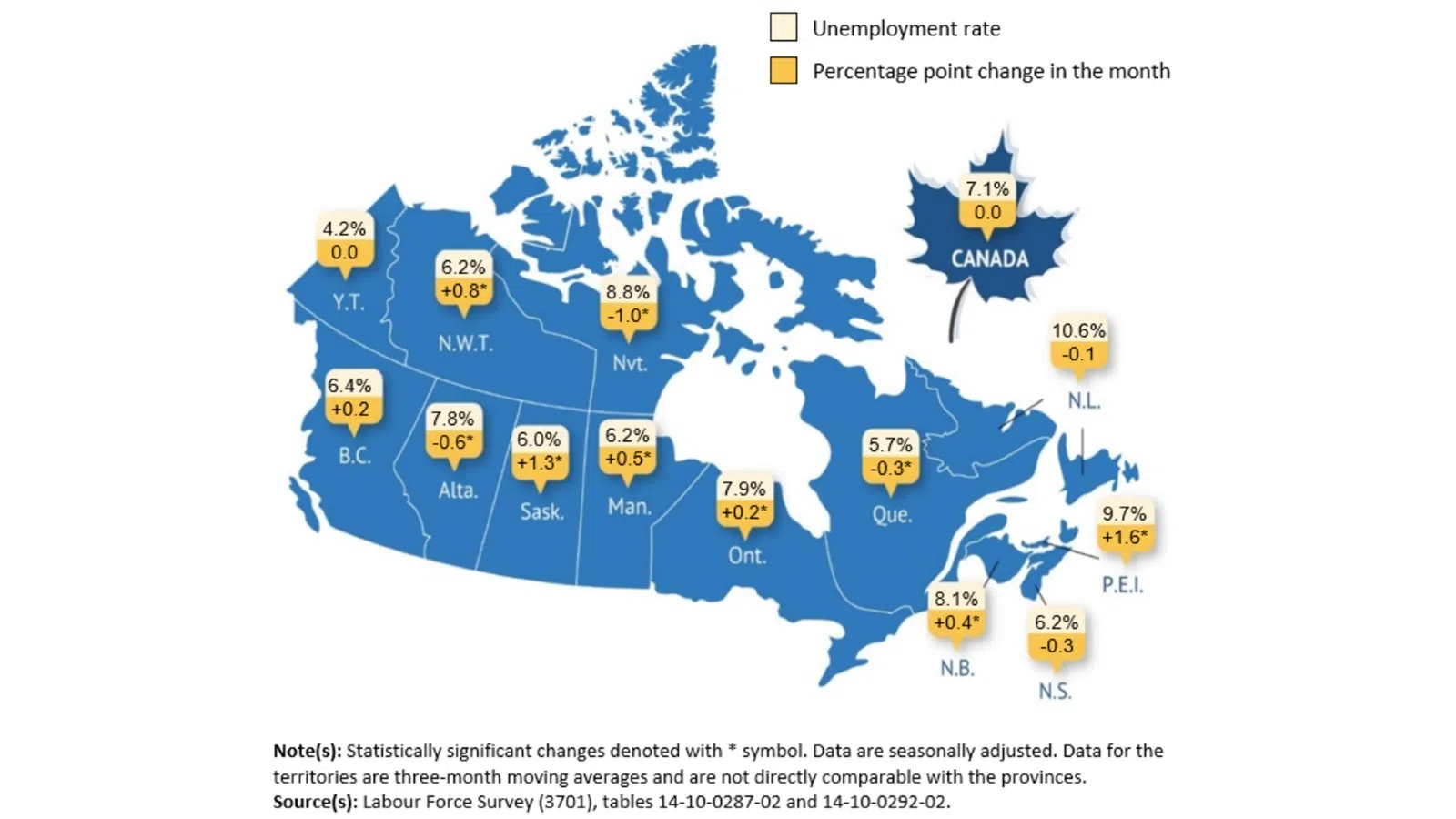Canada’s economy added 60,000 jobs in September, an increase of 0.3 per cent, marking a rebound after two months of declines, according to Statistics Canada.
The employment rate rose to 60.6 per cent, while the national unemployment rate held steady at 7.1 per cent.
StatsCan says most of the gains were in full‑time work, which rose by 106,000 positions. Part‑time employment fell by 46,000.
Public sector jobs increased by 31,000, while smaller gains were recorded in the private sector and among the self‑employed.
Employment increased among people aged 25 to 54, with 76,000 more women and 33,000 more men in the workforce. Employment among those 55 and older declined by 44,000.
Statistics Canada explained that the youth unemployment rate rose to 14.7 per cent in September, the highest for that month since 2010, excluding the pandemic years.
The increase was driven by students, with unemployment among youth attending school reaching 17.1 per cent, up more than three percentage points from a year earlier.
By industry, manufacturing added 28,000 jobs, the first increase since January.
Health care and social assistance gained 14,000 positions, while agriculture added 13,000. Employment in wholesale and retail trade fell by 21,000.
Average hourly wages were up 3.3 per cent compared with a year earlier, rising by $1.17 to $36.78.
A look at the provinces
Alberta led the way with 43,000 new jobs, more than offsetting losses in July and August. The province’s unemployment rate fell to 7.8 per cent.
New Brunswick gained 4,700 jobs and Manitoba added 3,900, but both provinces saw their unemployment rates rise as more people searched for work. Newfoundland and Labrador lost 2,200 jobs.
Employment was little changed in Ontario and Quebec. Ontario’s unemployment rate edged up to 7.9 per cent, while Quebec’s fell to 5.7 per cent.
Statistics Canada also collected new information on whether workers were employed in jobs related to their education or training.
The agency says 16.4 per cent of core‑aged workers with postsecondary education were in jobs unrelated to their field in September, up from a year earlier.
The rate was higher among workers aged 25 to 34, at 18.2 per cent.
Recent immigrants were more likely to be in jobs unrelated to their education, at 21.2 per cent, compared with 15.2 per cent of Canadian‑born workers.
More than four in 10 recent immigrants said the main reason was a lack of jobs in their field.
In comparison, more than half of Canadian-born workers in jobs unrelated to their field said they picked a different career path on purpose.
StatsCan also reported that 21.8 per cent of core‑aged workers with postsecondary education felt overqualified for their current role, little changed from last year.
Among recent immigrants, that figure rose to 34.7 per cent, with many working in sales and service or business, finance and administration jobs.
Statistics Canada defines the labour force as everyone aged 15 or older who has a job or is actively looking for one.
The full report can be found on Statistics Canada’s website.









